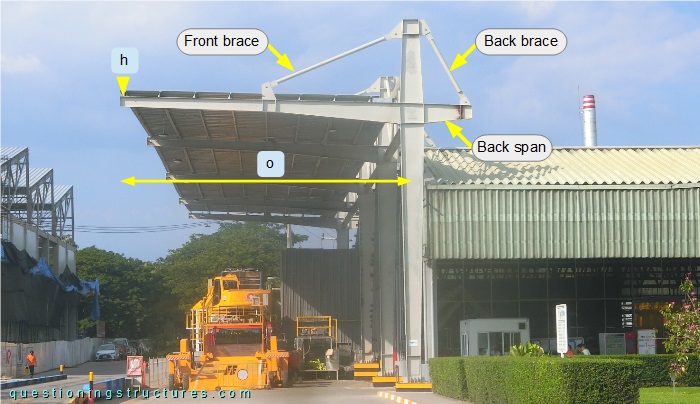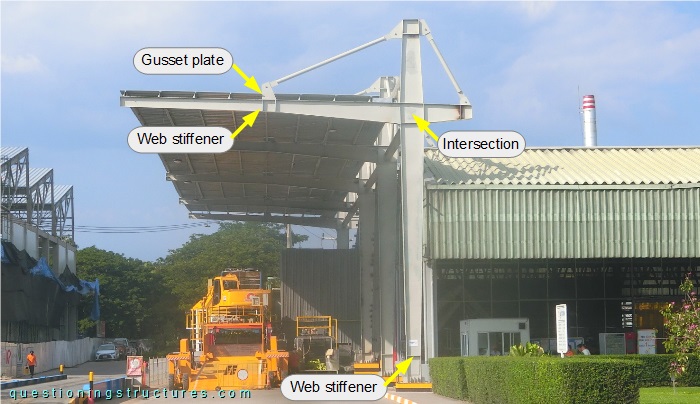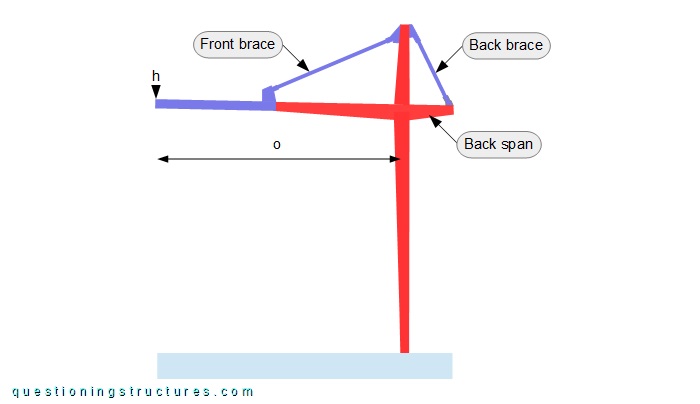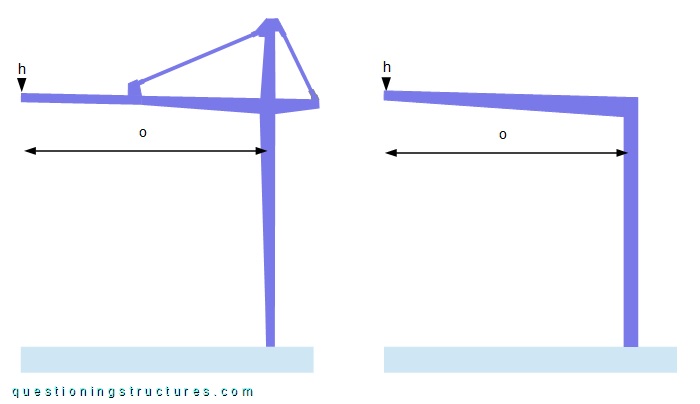General Information
Figure 1 shows a covered logistic area.

The superstructure is made of steel and consists mainly of columns, braced cantilevers, braced back spans, a longitudinal truss, purlins, sag rods, roof cross braces, and metal roofing sheets. The columns, the cantilevers, and the back spans are made of I-sections, while the braces (front and back) are made of circular hollow sections. The braced cantilever o ≅ 8 m, and the elevation h ≅ 9 m.
Braced Cantilever Structure
Figure 2 shows the structure.

The cantilever and the back span are welded to the column, and the connections to the braces (front and back) consist of gusset plates and bolts (one bolt per brace's end). Web stiffeners are installed under the gusset plates, in the column-cantilever/back span intersection, and in the bottom region of the column. The cantilever is tapered toward the front brace connection, after which it is non-tapered until the free end; the back span is tapered toward the back brace connection, and the column is tapered toward the top and the column's base (asymmetrically double tapered). Figure 3 shows a schematic lateral view of the braced cantilever structure.

How does tapering the column toward its base affect the structural efficiency?
Figure 4 shows a schematic lateral view of the used structure and an alternative variant.

The main transverse structure of the alternative variant consists of a tapered cantilever and a non-tapered column made of I-sections.